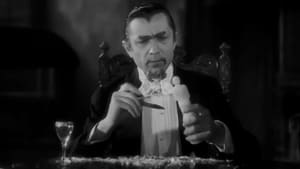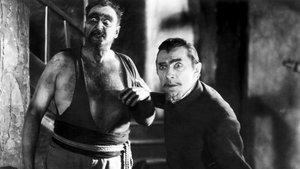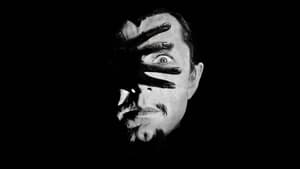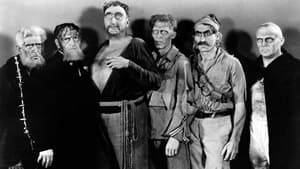Contact: [email protected]
Video Sources 0 Views
- Watch trailer
- White Zombie

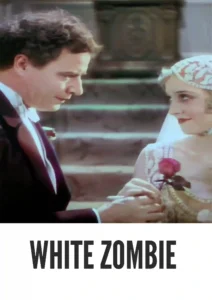
White Zombie 1932 First Early Colored Films Version
Synopsis
Table of Contents
ToggleReview: White Zombie (1932) – A Haunting Tale of Horror and Despair

Introduction
“White Zombie” (1932) emerges as a landmark in horror cinema, blending eerie atmosphere with chilling performances to create a haunting masterpiece. In this review, we’ll explore the significance of this early horror film and its enduring impact on the genre.
Check The Full Colorized Movies List
Check Our Colorized Movies Trailer Channel
Understanding White Zombie 1932: Director, Cast, and Genre
Directed by Victor Halperin, “White Zombie” (1932) showcases his ability to evoke fear and suspense through atmospheric storytelling. The film stars horror icon Bela Lugosi in a mesmerizing performance as Murder Legendre, a malevolent voodoo master. Set against the backdrop of a Haitian plantation, “White Zombie” (1932) delves into themes of dark magic and forbidden desire, establishing itself as a seminal work in the horror genre.
Exploring the World of White Zombie 1932: Plot and Characters
At its core, “White Zombie” (1932) follows a young couple who find themselves entangled in a web of terror after encountering Murder Legendre. As they navigate the treacherous terrain of the Haitian countryside, they confront a host of undead creatures and sinister forces that threaten to consume their very souls. Along the way, they must grapple with their own fears and desires, as well as the malevolent influence of Murder Legendre and his army of zombies.
The Art of Film Colorization
While “White Zombie” (1932) was originally filmed in black and white, its timeless tale of horror and despair remains as vivid as ever. The film’s stark cinematography and evocative lighting create an atmosphere of dread and foreboding, drawing viewers into its nightmarish world of voodoo and witchcraft. While colorization techniques have evolved since the film’s release, the haunting beauty of “White Zombie” (1932) remains undiminished, proving that true terror transcends the limitations of time and technology.
Early Colored Films: A Brief History
The history of colored films stretches back to the early days of cinema, with filmmakers experimenting with various techniques to add color to their creations. While “White Zombie” (1932) was not originally released in color, its influence on the horror genre paved the way for future films to explore the possibilities of colorization and visual storytelling. As technology advanced, so too did the art of film colorization, allowing filmmakers to bring their visions to life in vibrant hues and vivid detail.
White Zombie 1932 and Its Early Colored Version
While “White Zombie” (1932) was not originally released in color, its haunting imagery and evocative atmosphere lend themselves well to the colorization process. By adding color to the film’s dark and brooding visuals, filmmakers can enhance its eerie charm and draw viewers deeper into its nightmarish world. While purists may argue that colorization detracts from the film’s original aesthetic, others may appreciate the opportunity to experience “White Zombie” (1932) in a new light, with all the richness and depth that colorization can provide.
The Debate Over Film Colorization
The debate over film colorization is a contentious issue in the world of cinema, with passionate arguments on both sides of the divide. Proponents argue that colorization breathes new life into classic films and introduces them to a new generation of viewers, while detractors maintain that it compromises the artistic integrity of the original work and diminishes its historical significance. As the debate rages on, filmmakers and audiences alike are left to ponder the merits and drawbacks of colorization in the ever-evolving landscape of cinema.
Examining White Zombie 1932 as an Early Colored Film
As with any colorized classic, the impact of colorization on “White Zombie” (1932) is a matter of personal interpretation. Some may argue that it enhances the film’s visual appeal and immerses viewers in its world, while others may feel that it detracts from the stark beauty of the original black and white version. Regardless of one’s stance on the issue, there’s no denying the enduring power of “White Zombie” (1932) as a seminal work in the horror genre that continues to captivate audiences with its chilling atmosphere and unforgettable imagery.
Influence and Legacy: White Zombie 1932’s Impact on Cinema
“White Zombie” (1932) has left an indelible mark on the world of horror cinema, inspiring countless filmmakers and captivating audiences with its haunting imagery and atmospheric storytelling. From its iconic portrayal of voodoo magic to its chilling depiction of the undead, the film continues to influence filmmakers to this day, shaping the evolution of the horror genre and leaving an indelible imprint on popular culture.
Director’s Cinematic Legacy: Beyond White Zombie 1932
Victor Halperin’s influence extends far beyond “White Zombie” (1932), with a diverse body of work that spans multiple genres and styles. While “White Zombie” (1932) remains his most enduring contribution to the horror genre, Halperin’s other films are celebrated for their innovative storytelling and visual flair. Through his groundbreaking work, Halperin has left an indelible imprint on the world of cinema, inspiring generations of filmmakers to push the boundaries of creativity and imagination.
Themes Explored in White Zombie 1932
“White Zombie” (1932) explores a myriad of themes, from the nature of evil to the power of the supernatural. Through its richly drawn characters and atmospheric storytelling, the film invites viewers to confront their deepest fears and explore the darkest recesses of the human psyche. As audiences immerse themselves in the world of “White Zombie” (1932), they are reminded of the fragility of the human spirit and the enduring allure of the unknown.
Reception and Controversy Surrounding White Zombie 1932
Upon its release, “White Zombie” (1932) received mixed reviews from critics, with some praising its atmospheric visuals and chilling performances, while others criticized its slow pacing and uneven storytelling. However, the film has since garnered a cult following among horror aficionados, who appreciate its unique blend of supernatural horror and gothic romance. While the decision to release the film in a colorized format may spark debate among purists, there’s no denying the enduring appeal of “White Zombie” (1932) as a classic of the horror genre that continues to captivate audiences with its timeless tale of terror and despair.
Where to Watch White Zombie 1932 Online
For those eager to experience the spine-tingling terror of “White Zombie” (1932), the film is readily available on popular streaming platforms such as Netflix, Amazon Prime, and Hulu. Whether you choose to watch it in its original black and white format or the early colored version, “White Zombie” (1932) promises to transport you to a world of nightmares and dark fantasies, where the line between the living and the dead blurs and the horrors of the human soul are laid bare.
FAQs About White Zombie 1932
Q: Is “White Zombie” (1932) based on a true story? A: No, “White Zombie” (1932) is a fictional tale crafted by screenwriter Garnett Weston, who drew inspiration from various legends and folklore surrounding voodoo and the undead.
Q: Who are the main actors in “White Zombie” (1932)? A: “White Zombie” (1932) features horror icon Bela Lugosi in a mesmerizing performance as Murder Legendre, a malevolent voodoo master who controls the undead. The film also stars Madge Bellamy as a young woman caught in his sinister web of deceit and terror.
Q: What awards did “White Zombie” (1932) win? A: While “White Zombie” (1932) did not win any major awards, it remains a beloved classic of the horror genre, with a dedicated fan base and a lasting legacy in popular culture.
Q: Why was “White Zombie” (1932) released in a colorized format? A: The decision to release “White Zombie” (1932) in color was made to introduce the film to a new generation of viewers and enhance its visual appeal for modern audiences. While the choice to colorize the film may spark debate among purists, it ultimately allows “White Zombie” (1932) to reach a wider audience and ensure its continued relevance in the annals of cinematic history.
Conclusion
“In Virginia City 1940” remains a timeless classic that continues to captivate audiences with its thrilling action, memorable characters, and breathtaking cinematography. Whether viewed in its original black and white format or the early colored version, the film serves as a shining example of the power of cinema to inspire, entertain, and provoke thought. As we journey through the untamed landscapes of the Wild West and the hearts of its colorful characters, let us remember the enduring lessons of courage, honor, and resilience that “In Virginia City 1940” imparts. In a world filled with uncertainty and upheaval, the film serves as a beacon of hope and a reminder of the indomitable spirit of the human soul.
